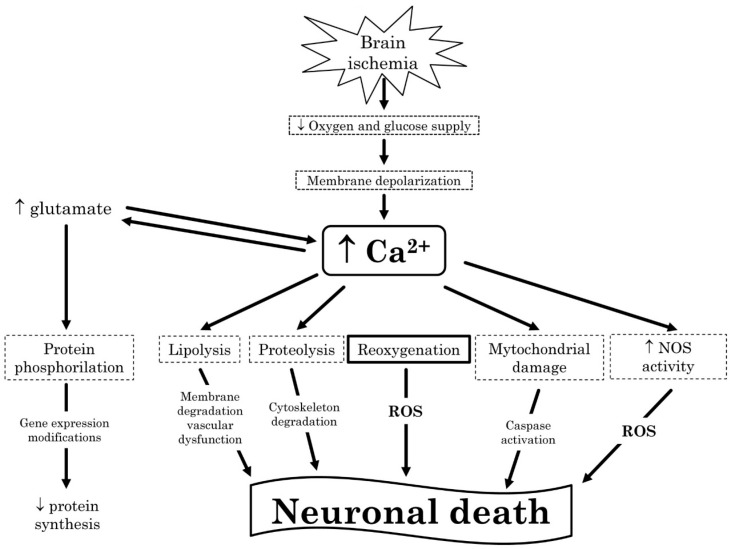Figure 1.
Mechanisms of neuronal death in acute ischemic stroke. After brain ischemia occurs, a reduction in the oxygen and glucose supply is carried out leading to the depolarization of membranes and finally to a great increase in intracellular calcium concentration and release of glutamate. Glutamate receptors, once activated, are responsible for the further increase in calcium concentration. The detrimental effects of this huge calcium concentration are proteolysis, lipolysis, mitochondrial damage, and increase in nitric oxide synthase activity. Despite the re-oxygenation should favor the recovery, it triggers reactive oxygen species production, amplifying the damage, ultimately leading to death of neuronal cells. Ca2+: calcium. NOS: nitrix oxide synthase. ROS: reactive oxygen species.

